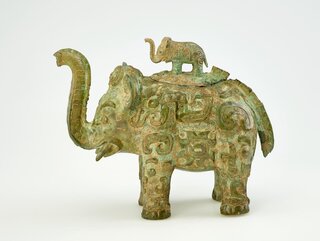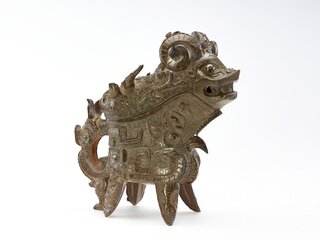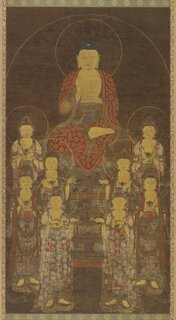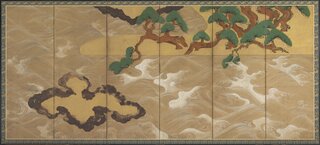
Long saffron yellow colored gown of richly brocaded cloth with wide bell-shaped sleeves and no collar. It is decorated with a double row of buttons worked in thread down to the waist. On each side of the row of buttons is an oval shaped design the ends of which extend up and around the collar. The gown itself is embellished with a floral pattern and the edges finished in silk braid. The inside is lined in white cloth and edged in blue.
This style of clothing probably originated in Persia and eventually spread and became popular throughout the Arab world. Caftans were worn by both men and women, especially scholars and high-ranking officials who were part of the Moroccan urban elite. This particular type of caftan was probably worn as part of a bridal costume and was likely an early style garment due to the wide sleeves. Later caftan styles have narrower sleeves, much like European clothing. This older style caftan is rarely worn today.




